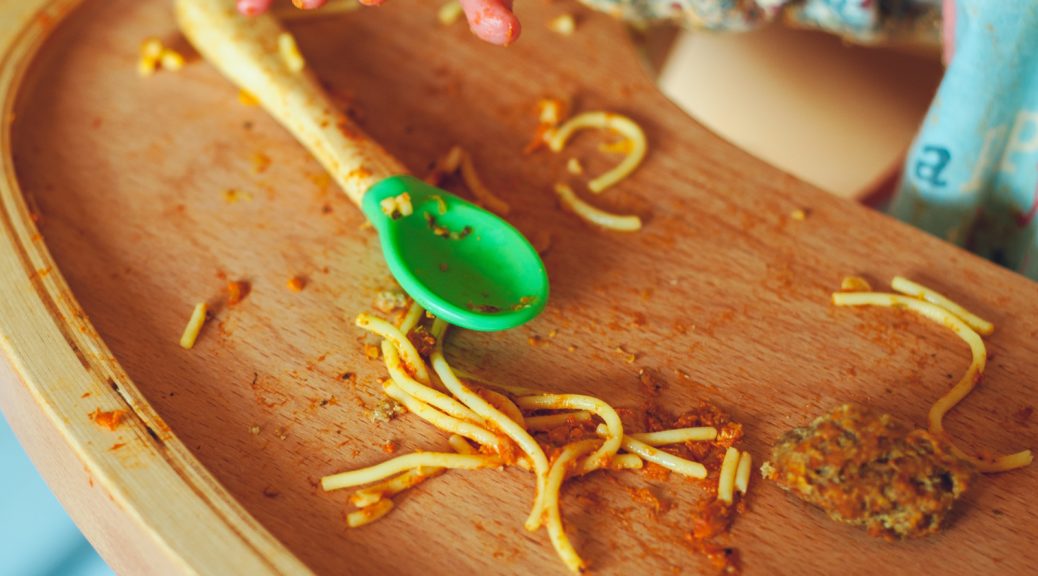
Is science backing up baby-led weaning (BLW)?
Baby-led weaning (BLW) is an approach to initiating complementary feeding and introducing solids to babies. In this method, children feed themselves with their own hands and are not spoon-fed mashed or pureed baby food. This method encourages the infant to be the active individual in their feeding journey and not a passive receptor of food, as happens with traditional spoon feeding. This way, infants self-regulate, favoring perceptive feeding based on the child’s hunger and satiety signals.
The concept of Baby-Led weaning was proposed by midwife and researcher Gill Rapley in the early 2000s, but it was not until 2011 that the first studies were published in scientific journals, and to date, there have been about forty published articles registered in Pubmed.
Research on BLW focuses on four themes:
- Infant growth
- Safety of the method
- Feeding behavior of the child
- Infant health
The most notable results of these studies are:
- BLW encourages the maintenance of breastfeeding because it helps to ensure that complementary foods do not replace breast or formula feeding and thus do not displace milk intake (1).
- BLW infants consume the same calories as those fed on pureed baby food (2).
- There are no differences in infant growth between the BLW method and giving pureed baby food (2,3,4).
- Infants fed with BLW or traditional purees present the same risk of choking (5).
- Infants fed with BLW showed more preference for complex carbohydrates, while those fed with pureed foods showed more preference for sweet food (6).
- BLW infants enjoy certain benefits such as sharing more family meals, less family conflict at mealtimes, healthier eating behavior, and possible developmental advantages (7).
- Infants who followed BLW had a greater response to fullness and, therefore, had greater control of their appetite (8).
- In one study, a lower percentage of overweight was observed in 18-to 24-month-old infants fed with BLW compared with the traditional method (8). However, another study presented a different perspective, not finding a significant influence of BLW on the development of overweight in 2-year-old infants (2).
A new method proposed by a New Zealand research group led by Dr. Heath is BLISS (Baby-Led Introduction to SolidS). BLISS aims to optimize BLW in those areas of greatest concern: the risk of choking, iron deficiency, and avoiding faltering growth. Thus, the method proposes offering iron-rich food and calorie-rich food at each meal and avoiding food with a high risk of choking. Their studies conclude that there are no nutritional differences between BLW and BLISS infants (2), giving more strength to the idea that BLW in itself is an effective method for initiating solids.
In conclusion, BLW is a safe and appropriate method for initiating complementary feeding and introducing solids. The method is supported by scientific evidence, which has been accumulating in recent years. However, many more studies are still needed to assess the risks and benefits in the short and long term.
References
- Morison BJ, Taylor RW, Haszard JJ, Schramm CJ, Erickson LW, Fangupo LJ, et al. How different are baby-led weaning and conventional complementary feeding? A cross-sectional study of infants aged 6-8 months. BMJ Open [Internet]. 2016;6(5).
- Taylor RW, Williams SM, Fangupo LJ, Wheeler BJ, Taylor BJ, Daniels L, et al. Effect of a baby-led approach to complementary feeding on infant growth and overweight: A randomized clinical trial. JAMA Pediatr [Internet]. 2017;171(9):838–46.
- Kumar G. Baby-led weaning did not significantly impact body mass index when compared with traditional spoon-feeding. Arch Dis Child Educ Pract Ed [Internet]. 2018;103(4):222.
- Jones SW, Lee M, Brown A. Spoonfeeding is associated with increased infant weight but only amongst formula-fed infants. Matern Child Nutr [Internet]. 2020;16(3):1–8.
- Fangupo LJ, Heath ALM, Williams SM, Williams LWE, Morison BJ, Fleming EA, et al. A baby-led approach to eating solids and risk of choking. Pediatrics [Internet]. 2016;138(4).
- Townsend E, Pitchford NJ. Baby knows best? The impact of weaning style on food preferences and body mass index in early childhood in a case-controlled sample. BMJ Open [Internet]. 2012;2(1):1–6.
- Cameron SL, Taylor RW, Heath ALM. Parent-led or baby-led? Associations between complementary feeding practices and health-related behaviours in a survey of New Zealand families. BMJ Open [Internet]. 2013;3(12):1–9.
- Brown A, Lee MD. Early influences on child satiety-responsiveness: The role of weaning style. Pediatr Obes [Internet]. 2015;10(1):57–66.